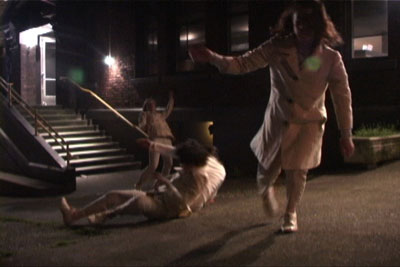Have you ever heard me in say class, “There is NO WRONG MOVEMENT”? What does that mean? What if that were really true? Without being told what is the “right” movement, how would you know how to move? How would you keep from hurting yourself? [Try a “No Wrong Movement mini-lesson.]
We learn to be self-regulating movers as infants and toddlers. What happened when we arrived into adulthood? How did we learn that there is a “right” way to move and a “wrong” way to move? My informal research as a parent has reminded me that there is an important phase of mastery acquisition in childhood. Remember those times when you spent hours dribbling a soccer ball everywhere, or whole afternoons practicing a cartwheel? This is sheer ambition—the desire to get it right, to do it BEST. It is an energetic, inspired time of life when we are really able to begin to DO things for ourselves, and be helpful members of our families and communities.
This strong inner desire to master skills, activities, even certain movements, comes up right at the time when kids enter school. In school they are, even more than at home when they were younger and less able, regulated by others: their teachers, their coaches, and their friends. This is really a time of intensive feedback: right answer, wrong answer; right behavior, wrong behavior. Despite all the fabulous learning that goes on, there is a concerning shift required of children from self-regulation to other-regulation in most schooling.
Leap ahead to adulthood, after the social pressures of adolescence have challenged our confidence and sense of self. Some of us may not have made it through adolescence with a friendly relationship with our bodies. Others of us may have learned to be physical achievers by regulating to others’ measures, rather than our internal ones.

So, that’s how we find ourselves, in adulthood, perplexed when asked by the yoga teacher to “move any way that feels good to you,” or uncomfortable when asked by a retreat leader to “make a tableau” with our co-workers while others are watching. It is, in some ways, due to the normal developmental process that we learn to look for the “right movement” and the “wrong movement”.
The guidance I offer you in private and classroom Feldenkrais sessions, and in yoga and in dance classes, has to do with coming back to your senses, and relearning to process of self-regulation. That process brings us to playfulness, sweetness and joy. Paradoxically, relearning the process of self-regulation—rediscovering how to move with joy, and for the pure pleasure of it— is, at this stage in our lives, the pathway to maturity.
(Originally posted November 5, 2011)
For a simple Meta-mini-lesson on DOING IT WRONG, follow this link and enjoy!